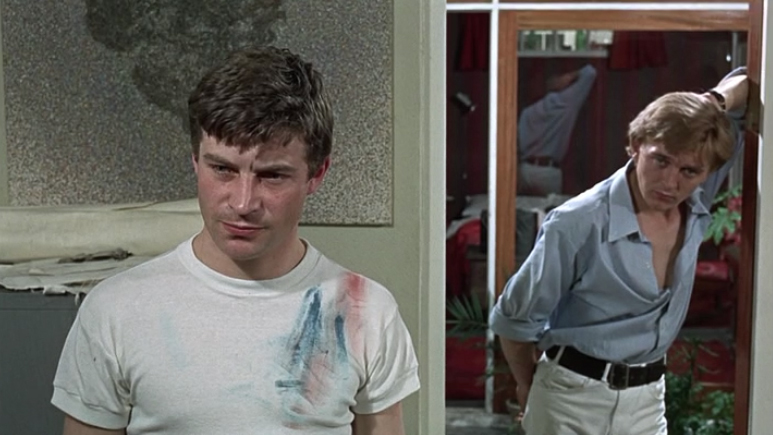This week's Hit Me With Your Best Shot topic is in honor of the release of the book Vanessa: The Life of Vanessa Redgrave. Imagine my surprise, given that dedication, when I watched Blow-Up for the first time since I was maybe 17 or 18 and realized that Vanessa is barely in it! Oops. Her presence looms large and plays tricks with the memory. Is it because we are constantly staring at her photograph and she takes on mythic dimension. Or is it because the actress herself is adept at playing not quite a flesh and blood woman but a projection, a prism of Mysterious Woman?
But, then, Vanessa aside. What isn't tricky about this enigmatic classic? The plot, as skeletal as it is, centers on a womanizing fashion photographer (David Hemmings) who sneakily follows a statuesque beauty (Redgrave) and her lover on their stroll through the park. He snaps away. Later he becomes convinced that while he was shooting them an actual shooting took place and he's inadvertently caught a murder in progress on the negatives. But has he? I love this noncommital bit of dialogue between the photographer and his friend late in the movie...
 my runner up shot. which is appropriately a shot of a shot.
my runner up shot. which is appropriately a shot of a shot.
Photographer: I saw a man killed this morning.
Friend: ...How did it happen?
Photographer: I don't know. I didn't see.
It's like cheeky mod rosetta stone. As is this bit between the photographer and his abstract artist roommate (?) who won't sell him a painting.

The Artist: They don't mean anything when I do them. Just a mess. Afterwards I find something to hang on to. Then it sorts itself out. It's like finding a clue in a detective story. Don't ask me about this one. I don't know yet.
In some ways, Blow-Up is the older visual sibling to the aural mysteries of The Conversation (1974). Accidental discoveries -- do you see/hear what I see/hear? -- lead to full blown obsession over the tiniest of the details. The details play out in the context of a gritty contemporary realist drama mixed with dreamscape madness. Though Blow-Up is best remembered as a sensational time capsule of 60s fashions and sexual frankness (and it is that, trust), what's more impressive and less dated is the maze-like quality of the visuals.
The photographer might as well be a minotaur in a labyrinth. [Click to enlarge]
Between the circling of and returning to the park, and the driving interludes (which never take us anywhere of note), and the photographer's own gargantuan but confusing loft/studio, crammed as it is with obstructed views due to photo props, scrims, feathers, staircases, jutting beams, strangely sized doorways and photographs hanging to dry, it's very difficult to get your bearings.
That's not from the purposeful neglect of the geometry of spaces that so many modern films suffer from (with their preference for close-ups and quick cuts even when the scenes don't call for it), but from the purposeful maze-like mystery of what has or hasn't happened and whether this photographer is ever really going anywhere despite his restless physical movement. He claims he's leaving London and he also wants to publish a book of non-fashion photography. My guess is he never does either.
 Best Shot. The photographer walking through one of his own self-made labyrinths. In this case scrims as walls.
Best Shot. The photographer walking through one of his own self-made labyrinths. In this case scrims as walls.
Even when he's not running up and down stairs, wandering mostly empty parks, driving to nowhere, or surrounding himself with or buying a gargantuan propellor -- an object created specifically for motion which is robbed of its purpose and purely decorative -- he's making his own mazes to get lost in: scrims, women, and murder photographs to swallow him up.
